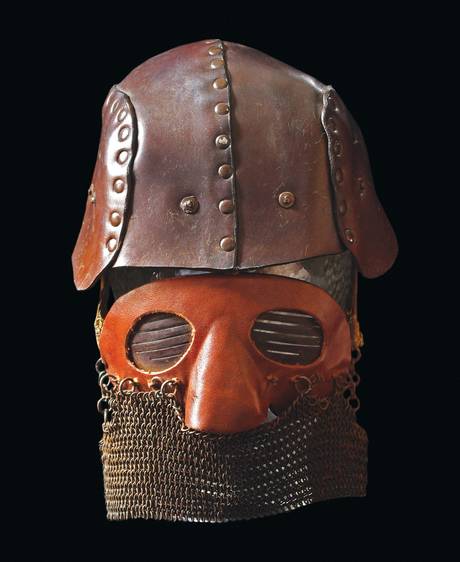Throughout the conflict which came to be known as the Great War, soldiers often had only a stunning sense of anxiety and their equipment by their side. We take a look at four of these objects courtesy of Peter Doyle’s ‘First World War in 100 Objects.’
The Tank Mask
This imposing object has to be seen to truly be believed. In the heat of the early tanks, crewmen were often subjected to bullet shrapnel, or the twisted metal of these early behemoths themselves. Tank masks might have appeared to be some sort of medieval throwback, employing a mesh of chainmail and leather to protect the face and skull.
The Trench Coat
Life in the trenches wasn’t all doom and gloom, in fact it could be downright dashing. The trench coat, that universal symbol of classic style, originated as the answer to the troublesome greatcoat. While greatcoats were never a comfortable fit for soldiers, the large bolts of wool became even more troublesome when worn in wet conditions. The early models didn’t just protect soldiers from the elements, they held gas hoods in order to provide relief from some of the war’s more brutal elements.
The Pickelhaube
The infamous German Pickelhaube might be the most iconic piece of World War I equipment to many historians. What many might not be aware of was just how reviled they were by German military thinkers themselves. They first arrived from Prussia in 1842, sporting leather chinstraps, gorgeous cockades, striking brass fittings, and most distinctive of all the great brass spike which sat atop.
While the helm looked interesting, to say the least, it was otherwise a disaster. Providing almost nothing in the way of protection from enemy fire or the elements, worse yet it provided a morale boost to enemy combatants who managed to snare one on the field. It would be replaced by the steel helm in 1916, The Independent reports.
The Loos Football
Perhaps the most important piece of World War I equipment covered by Doyle is the football. The famed London Irish Rifles used it as their secret weapon during their assault on the German position at Loos. Known for their great skill at the sport, when orders to attack came, they hurled the ball onto the field and began kicking it forward on their charge towards German lines. The ball may have gotten tangled in German barbwire, but the London Irish Rifles didn’t. The Germans were pushed back and the football itself became a celebrated part of First World War lore.
//
